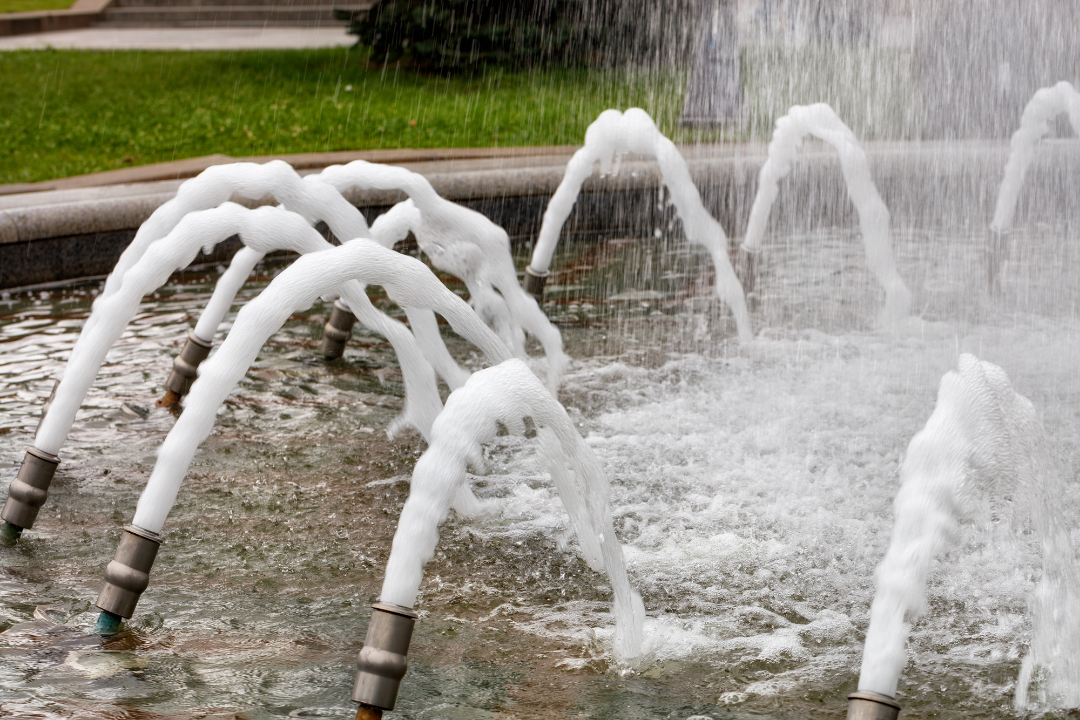
2022-04-16T09:57:18
Basic fountains are generally single water columns to varying heights with the column diameter of the appropriate thickness. In addition, there are groups of nozzles which can be combined in one multi-jet head from several individual nozzles - either of equal height vertically staggered. closely "bunched" or widely spread out. The height and the "throw" radius of the jets require a correspondingly large water area and depth. The general rule is - the fountain should not be higher than the distance between nozzle and the nearest edge of the basin, An artificially constructed basin. a pond or lake, a dammed-up and unmoving river course, a lagoon, or even a quiet ocean bay can be used as the water reservoir. In cases where water levels are not constant or in the case of greater water depths - floating installations are usually constructed In other cases concrete columns or concrete platforms are created in the water for mounting fountain attachments, submersible motor pumps attachments, submersible motor pumps and lights. Depending on the requirements, the Comet, Geiser, Cascade, "Special" full jet or a hollow-jet nozzle are suitable as fountain attachments. The supply to the nozzle attachment or group of nozzle attachments is made either with submersible motor pumps directly in the water or, with a pressure pipe and a pump dry mounted in a sump/pit close to the bank. In the case of very high fountain heights, which require extra large motor outputs, special transformer stations are often necessary adjacent to the installation. To enable the fountain height to be adapted to the prevailing winds, there are automatic controls available. Because of the special problems connected with high fountains, the advice. planning and services of experienced specialists is essential.

Have a question? Ask here!
Required fields are marked *